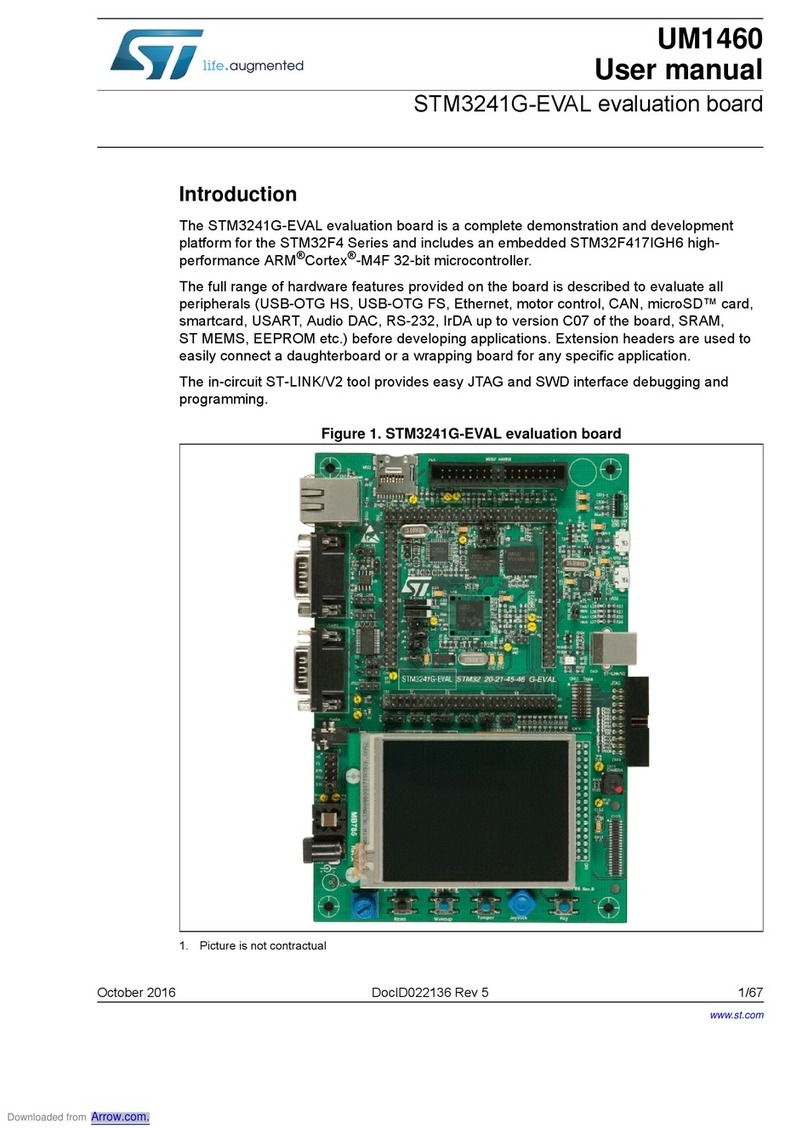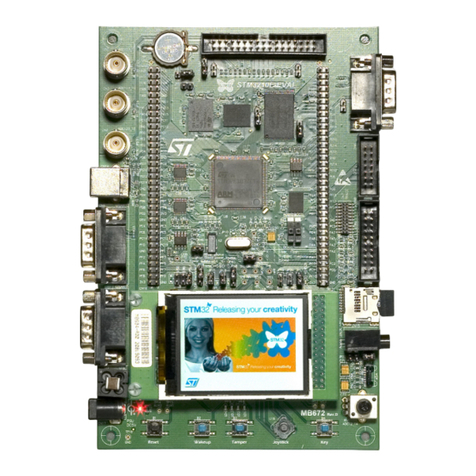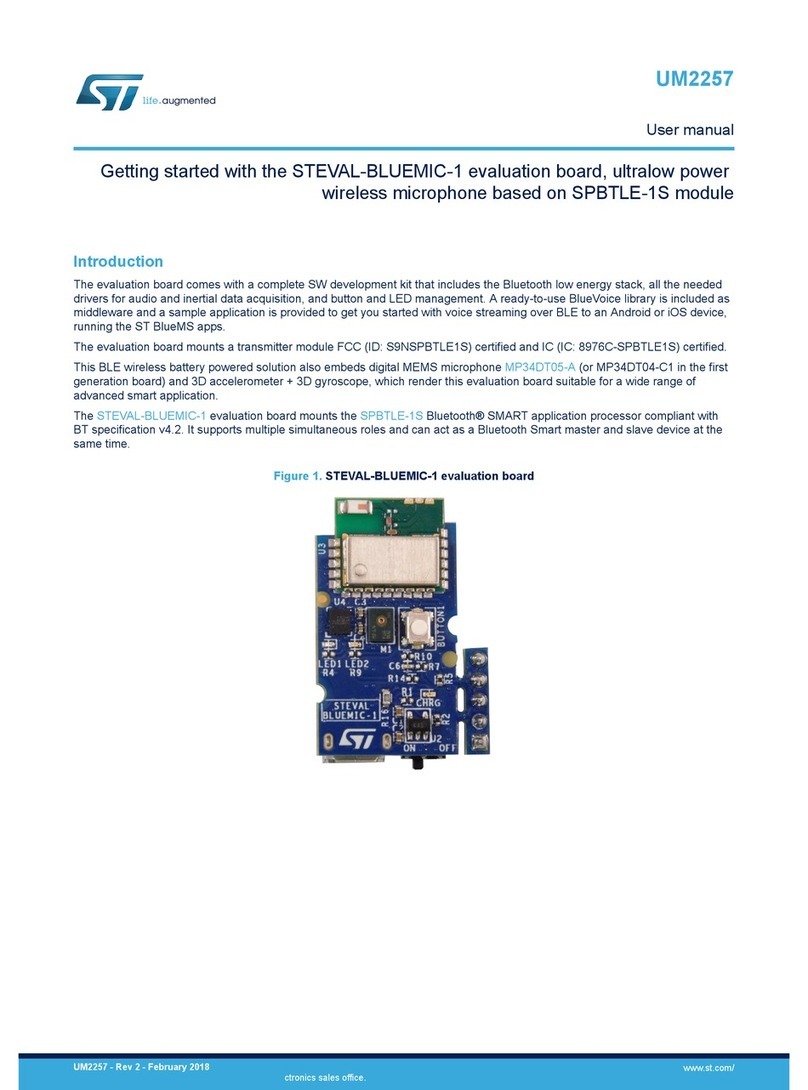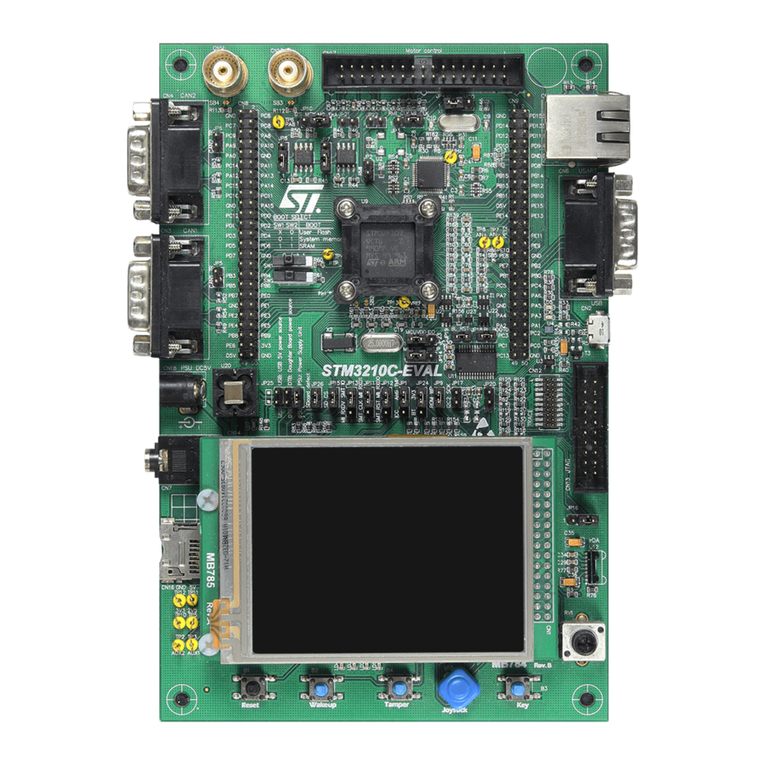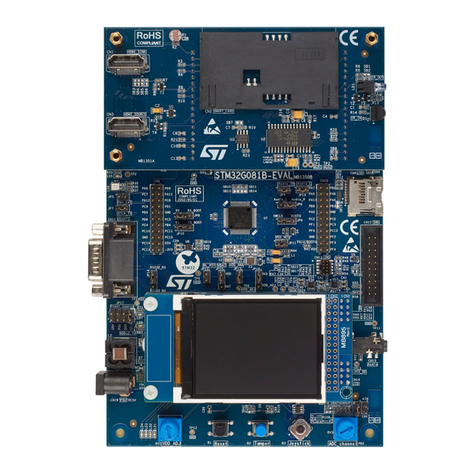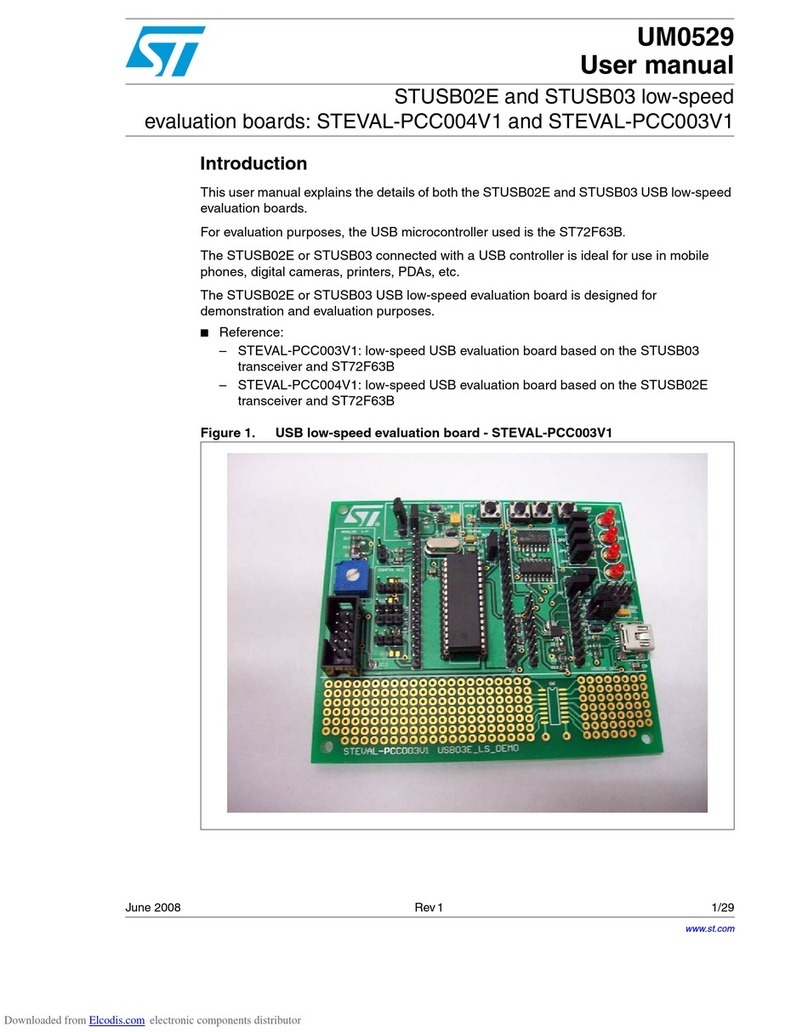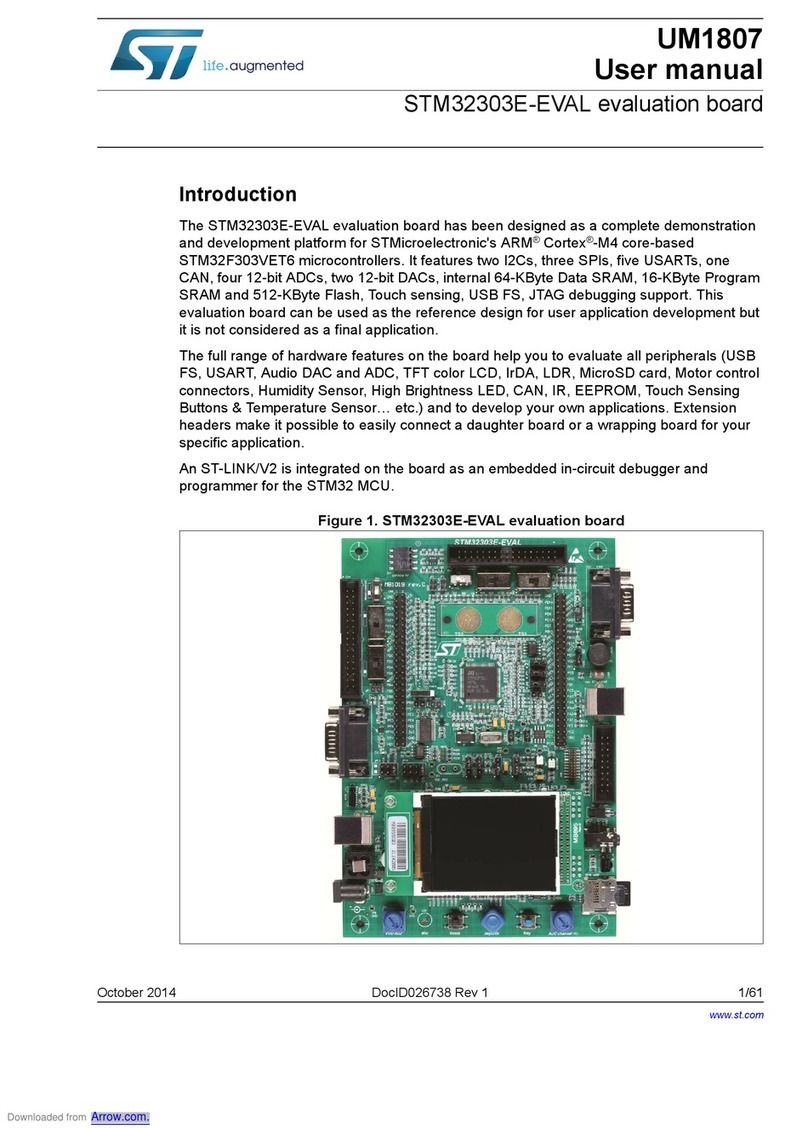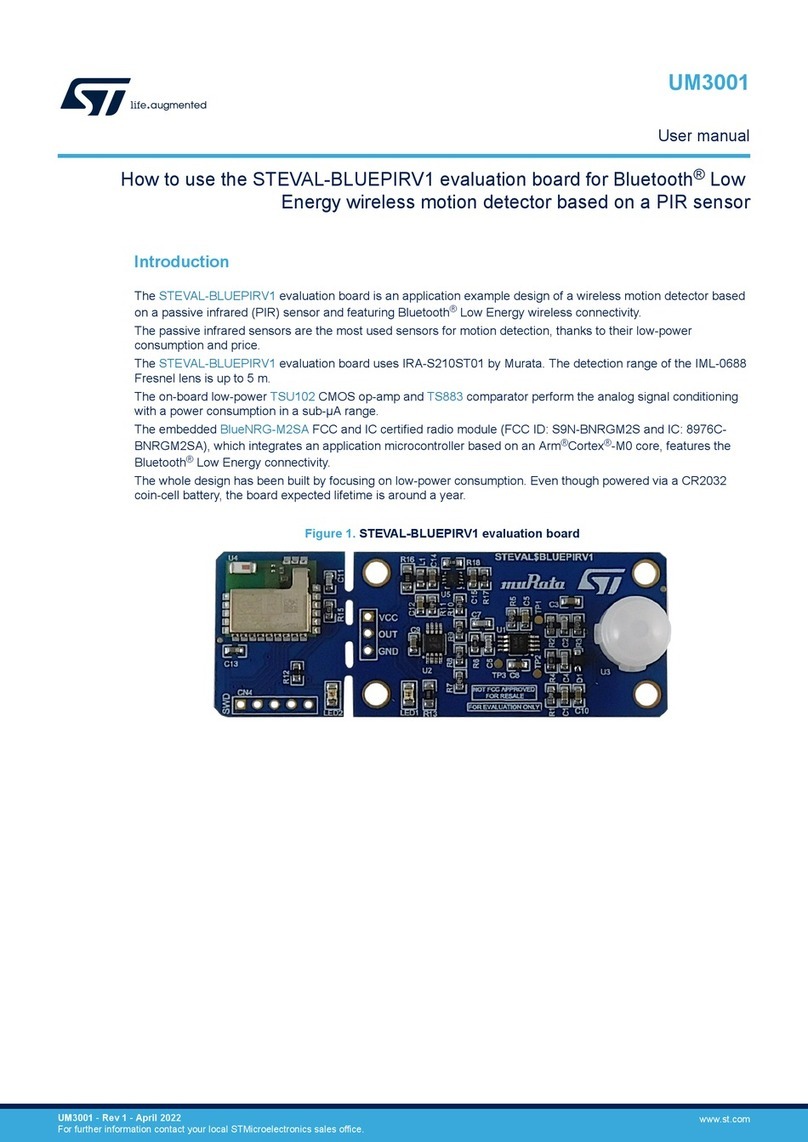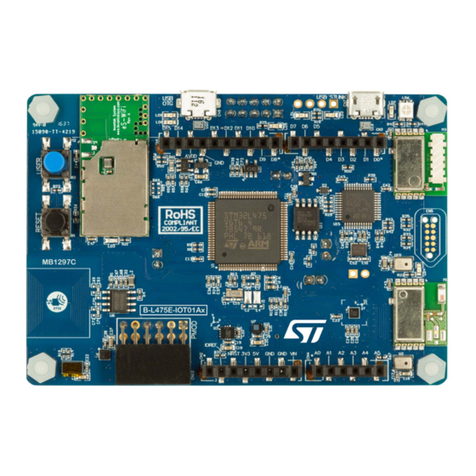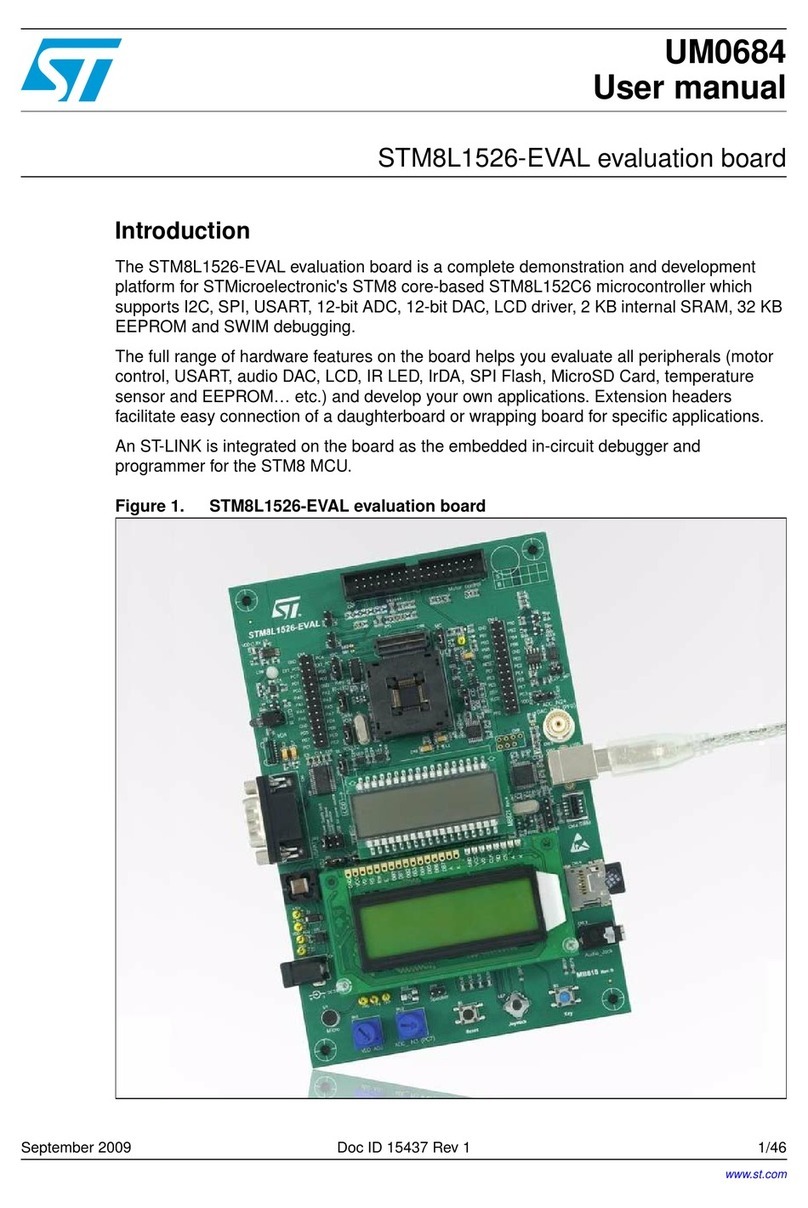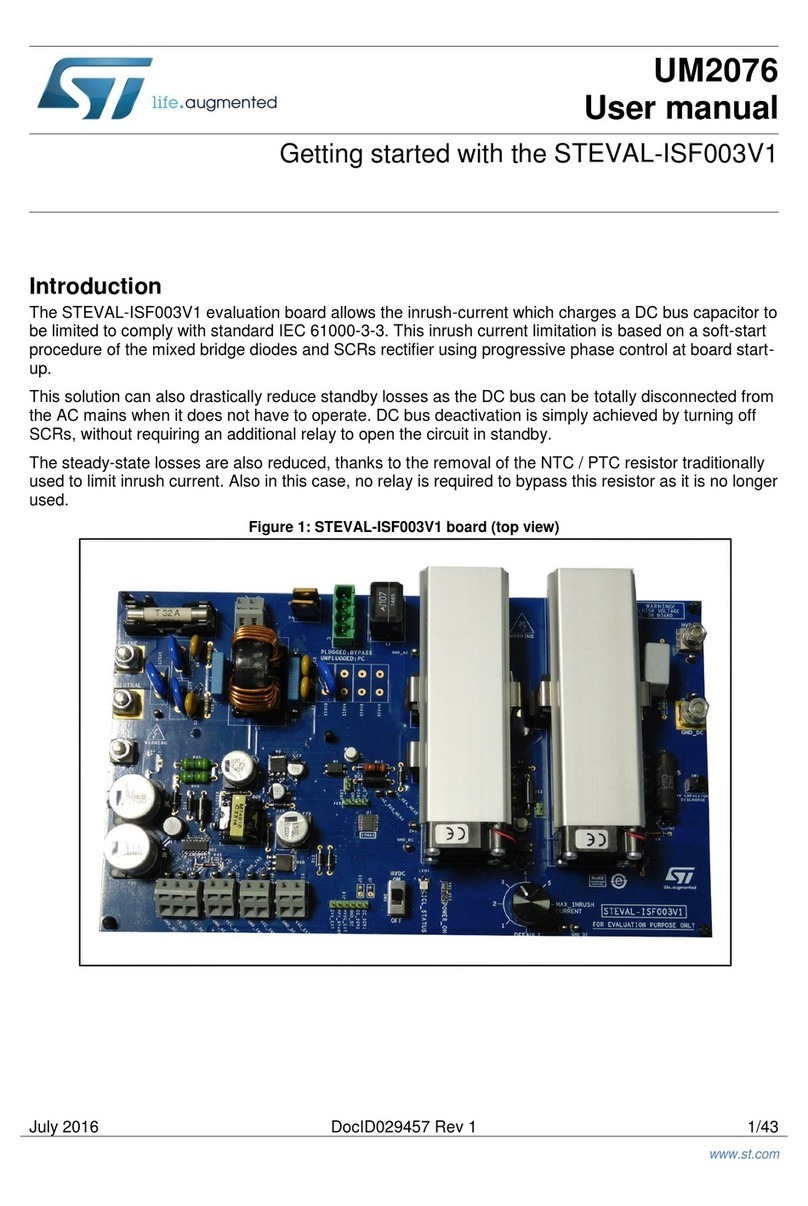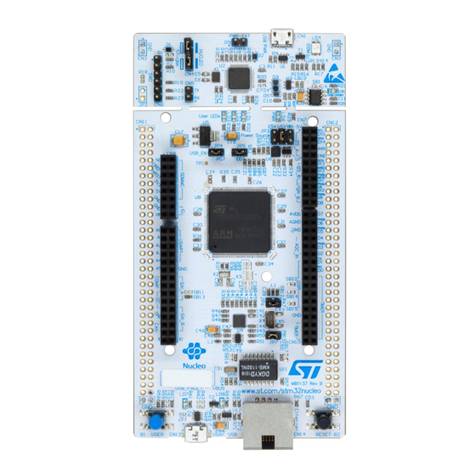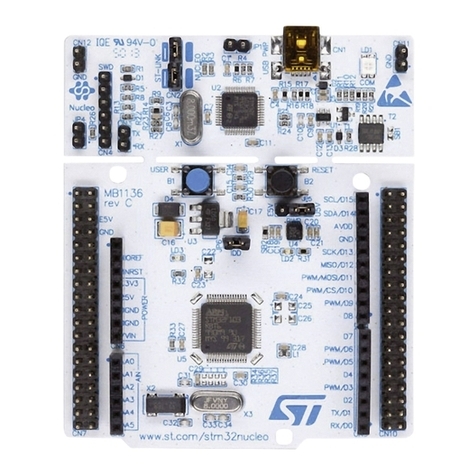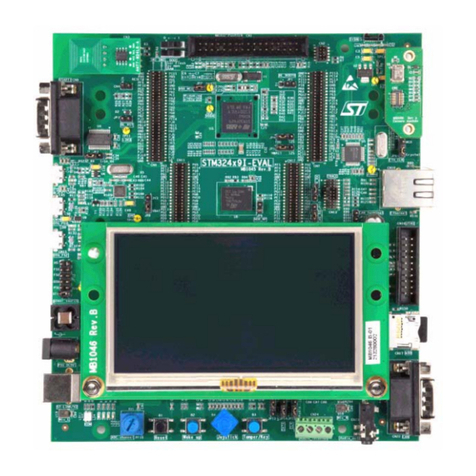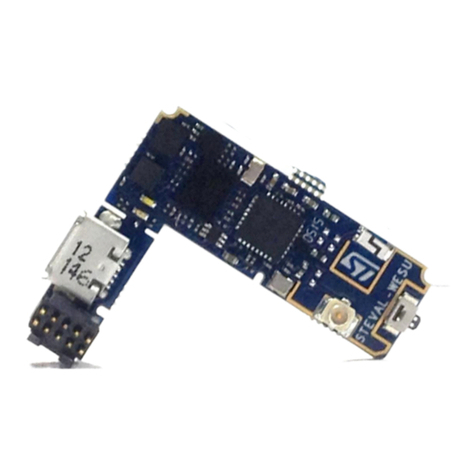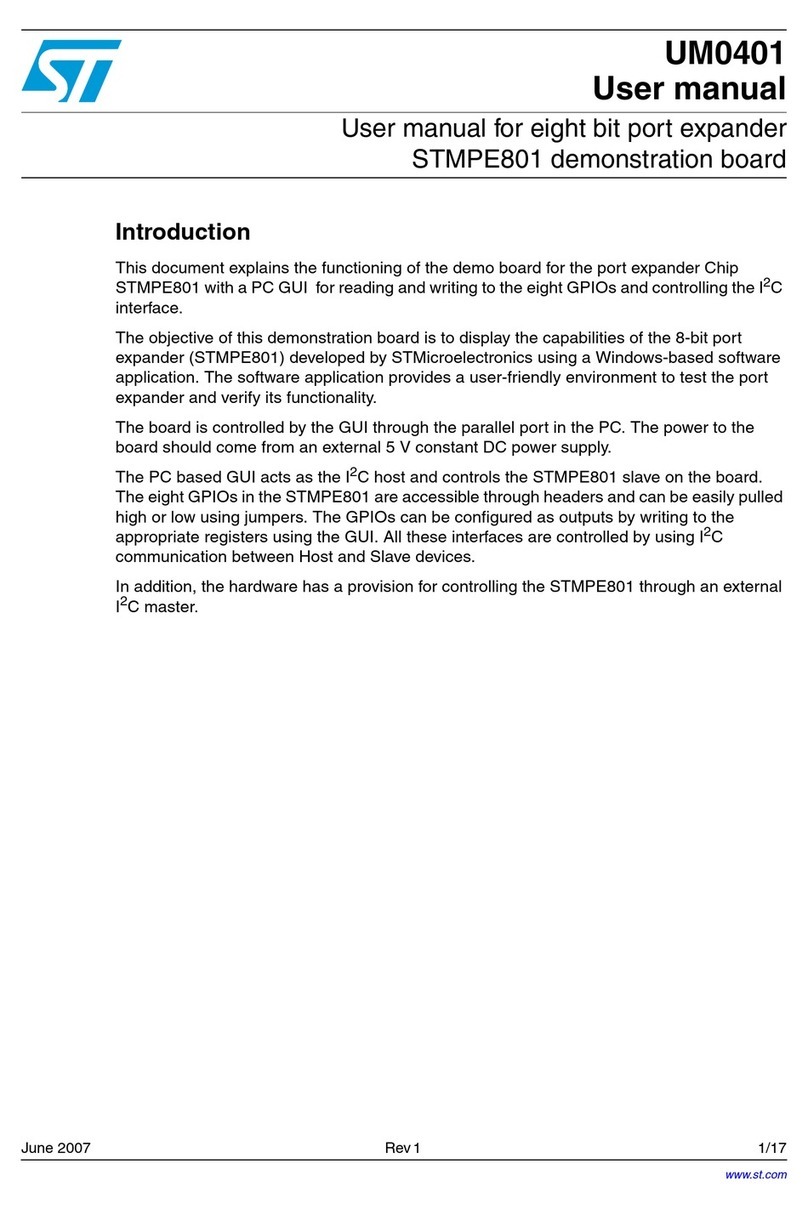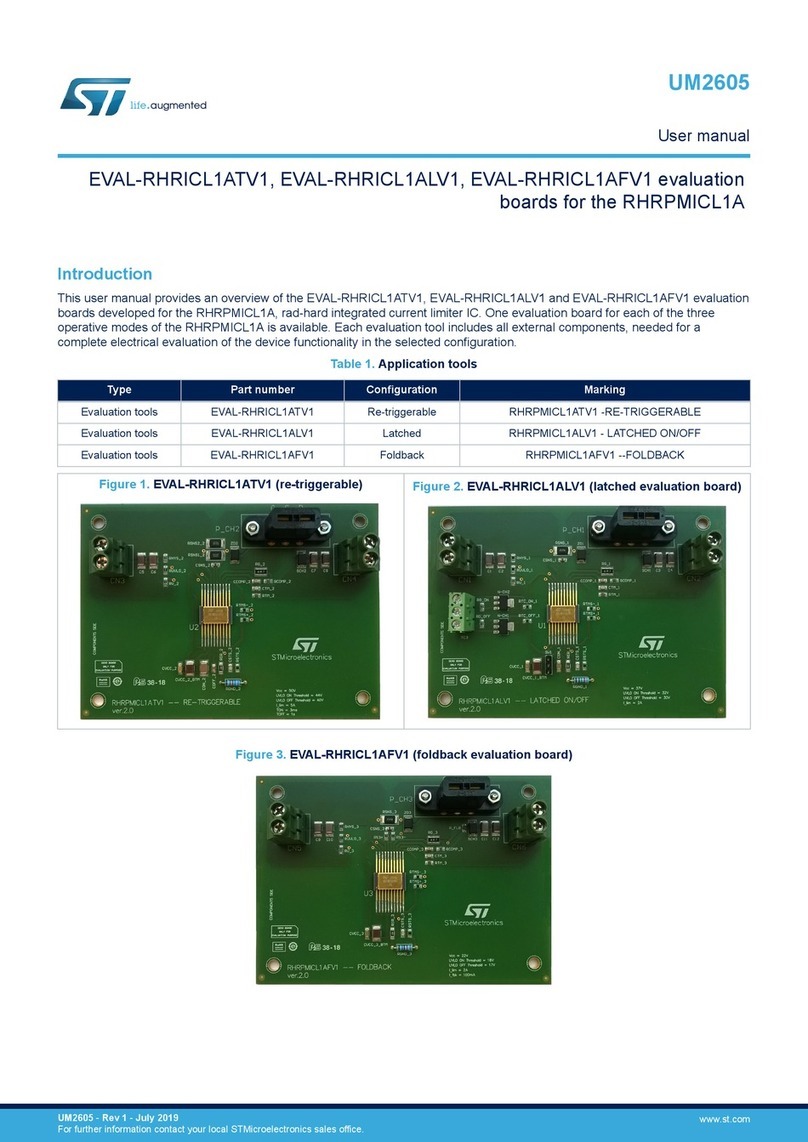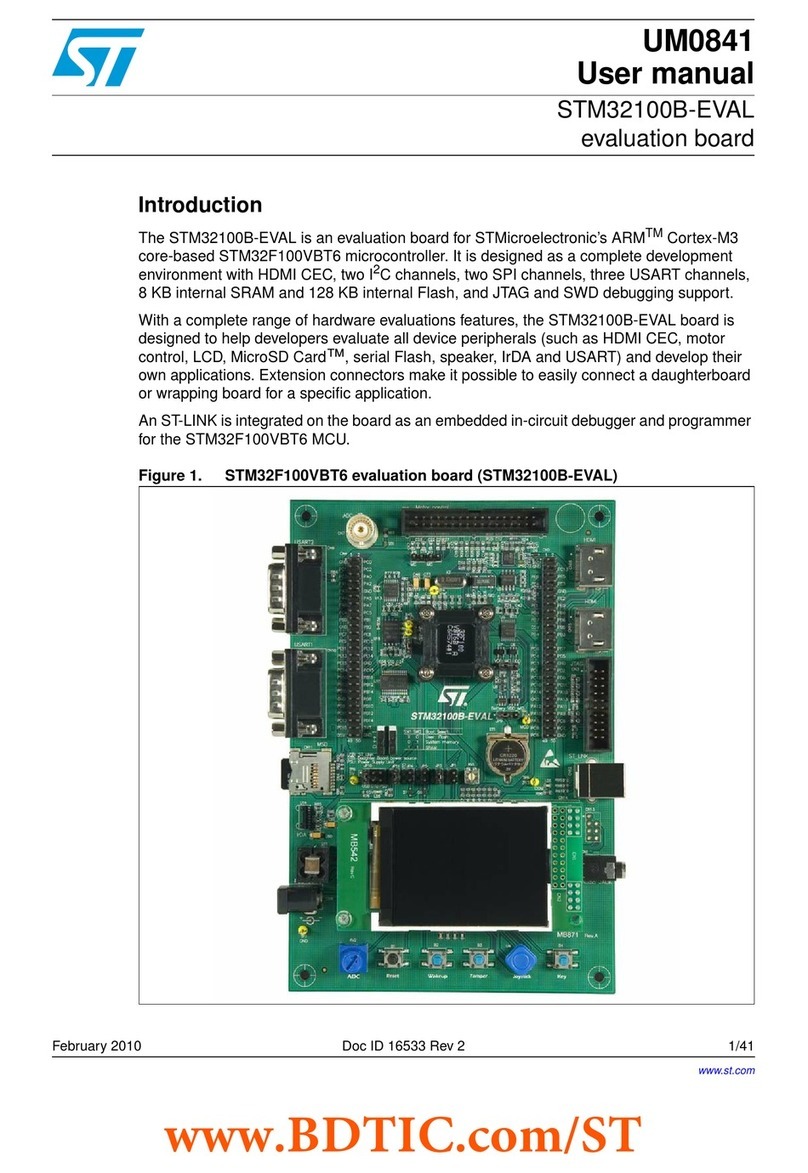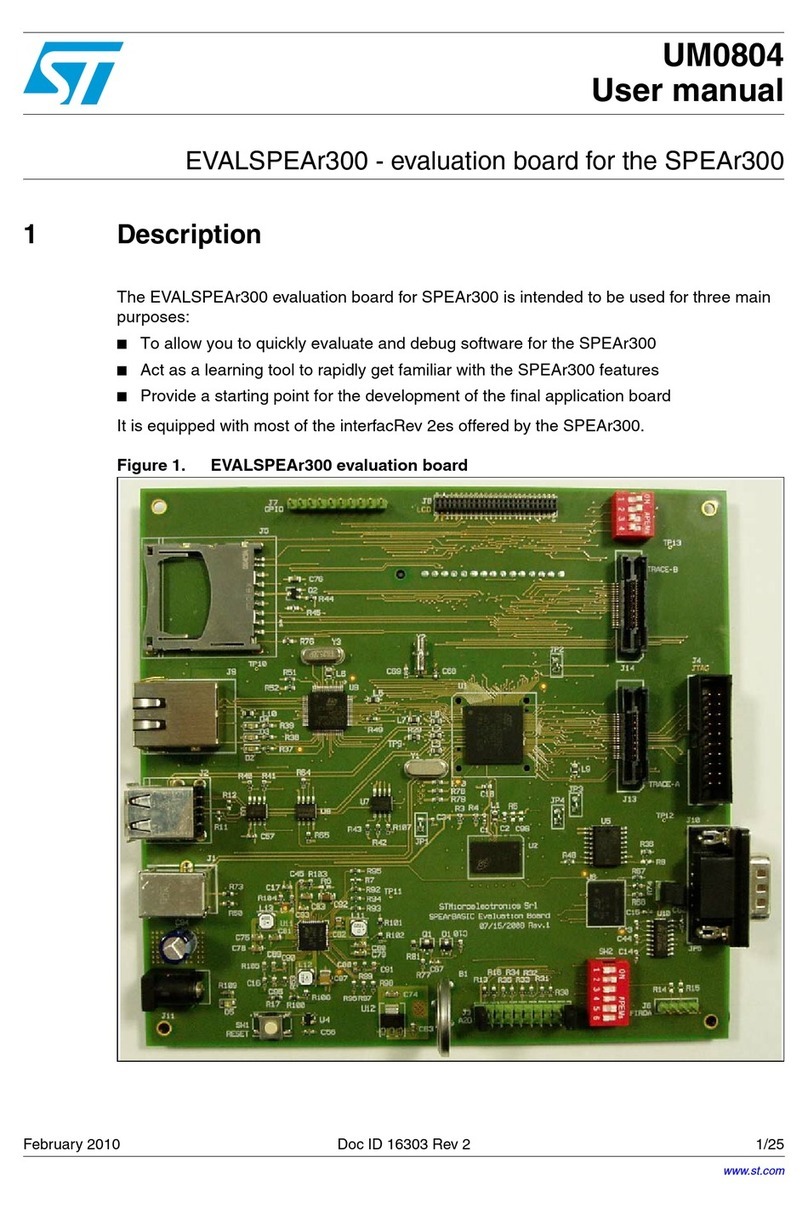Quick start UM1656
6/30 DocID025091 Rev 1
2 Quick start
The 32L100CDISCOVERY is a low-cost and easy-to-use development kit to quickly
evaluate and start development with an STM32L100 Value Line series.
Before installing and using the product, please accept the Evaluation Product License
Agreement from www.st.com/stm32l1-discovery.
For more information on the 32L100CDISCOVERY and for demonstration software, visit
www.st.com/stm32l1-discovery.
2.1 Getting started
Follow the sequence below to configure the 32L100CDISCOVERY board and launch the
DISCOVER application:
1. Check jumper position on the board, JP2 on, CN2 on (Discovery selected).
2. Connect the 32L100CDISCOVERY board to a PC with a USB cable ‘type A to mini-B’
through USB connector CN1 to power the board. Red LED LD1 (PWR) and LD2 (COM)
light up and green LED LD3 blinks.
3. Press user button B1 (bottom left corner of the board).
4. Observe how the green LED LD3 blinking changes according to USER button B1
clicks.
5. Each click on USER button B1 is confirmed by the blue LED LD4.
6. To study or modify the DISCOVER project related to this demo, visit
www.st.com/stm32l1-discovery and follow the tutorial.
7. Discover the STM32L100 Value Line features, download and execute programs
proposed in the list of projects.
8. Develop your own application using available examples.
2.2 System requirements
•Windows PC (XP, Vista, 7)
•USB type A to Mini-B USB cable
2.3 Development toolchain supporting the 32L100CDISCOVERY
•Altium®, TASKING™ VX-toolset
•ARM®, Atollic TrueSTUDIO®
•IAR™, EWARM (IAR Embedded Workbench®)
•Keil™, MDK-ARM™
2.4 Order code
To order the STM32L100 Value Line Discovery kit, use the order code STM32L100C-
DISCO.
